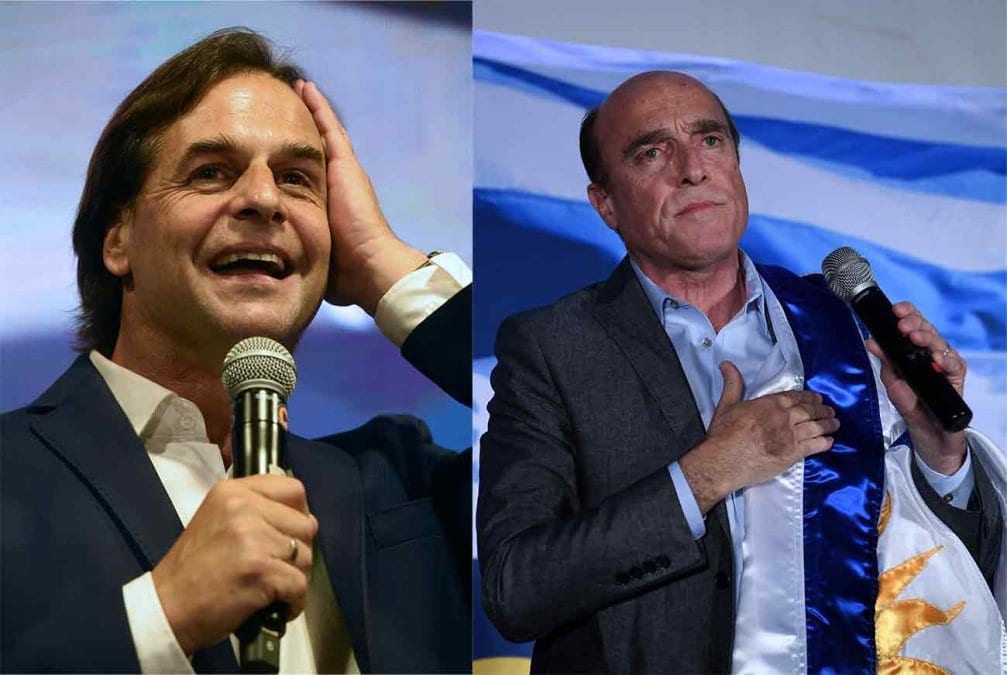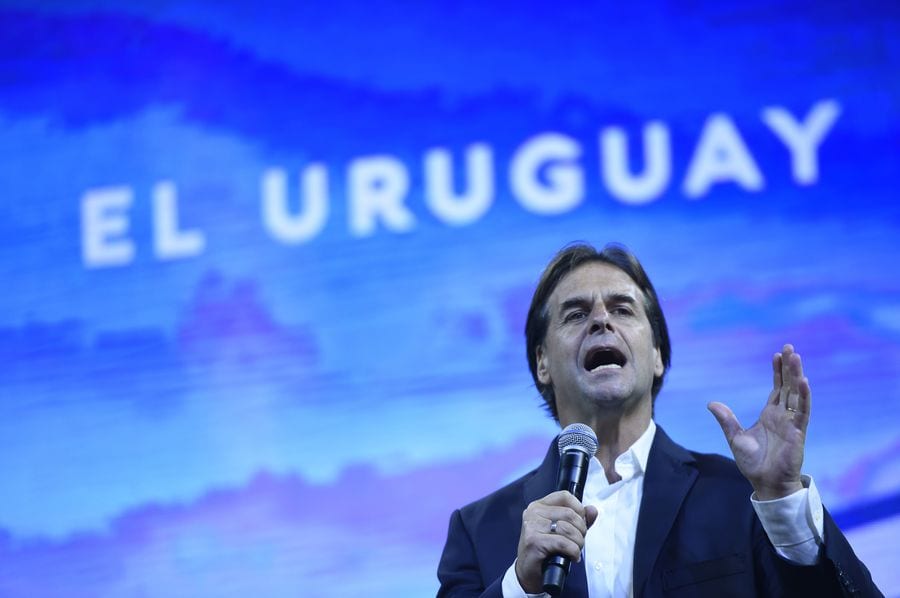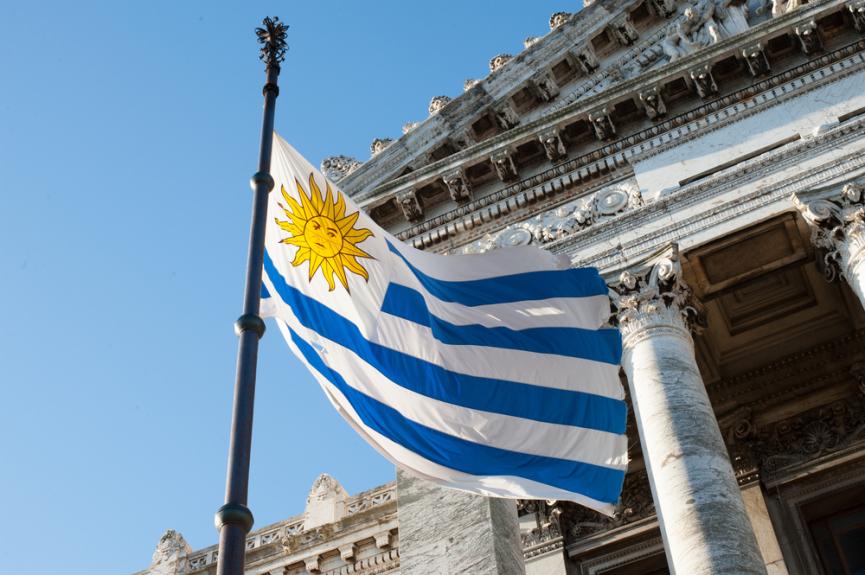On November 24, in the second round of the presidential election in Uruguay, Luis Lacalle Pou won, with a slight margin ahead of his opponent from the “Wide Front” coalition. This time, the confrontation between “left” and “right” forces in Uruguay was an event that went beyond not only this country, but the entire Latin American region as a whole. In “Latin American Switzerland”, as this state is called, traditionally characterized by its policy of neutrality, the pendulum suddenly swung sharply to the right. How will Uruguay change in the coming years? How will the election results in this Latin American country affect the modification of the geostrategic map of the region?
The second round of presidential elections took place in Uruguay on November 24, in which the “left” and “right” political forces came together: Daniel Martinez (Daniel Carlos Martínez Villamil) from the “Wide Front” coalition (Spanish – Frente Amplio) and Luis Lacalle Pou (Spanish – Luis Alberto Lacalle Pou) from the “National Party” (Spanish – National Party). Lacalle Pou managed to beat the opponent by a slight margin and gain 48.71% of the vote, and his opponent secured support, according to official statistics, 47.51% of the vote.
Never before have elections in this Latin American country, in which a little over two million citizens participated this year, been watched so actively at the regional and international levels. This interest is explained by the relative stability of the ruling regime in Uruguay. The Left Front coalition, the “Wide Front”, has been in power since 2005. After a “left” turn in the region, Tabaré Vázquez (Tabaré Ramón Vázquez Rosas) entrenched in the state political arena, who served as president first from 2005 to 2010, and then returning to this position in 2015 and staying there until now. Between the two periods of Vázquez from 2010 to 2015. Uruguay was led by renowned left-wing politician José Alberto Mujica Cordano. Both politicians consolidated the stability of the “Wide Front” political platform. Moreover, the victory of Lacalle Pou once again confirmed the trend towards hyperpolarization, which has recently swept Latin America.

Uruguay has always occupied a special ideological position in the region. On the geopolitical map of Latin America, the “right-wingers” seemed to have taken revenge over the past 15 years and came to power in a country known for its democracy and very moderate moods, however, extremely important for the followers of Chavez. In a more global sense, the victory of Lacalle Pou casts doubt on the end of the “turn” of the continent to the right, which began in 2015.
To date, six South American states have already fallen into the hands of the “right”: Uruguay, Brazil, and Paraguay – the most confident. In Colombia and Chile, amid mass protests, the right-wing leaders are not so firmly on their feet. And from November 10, Bolivia led by Jeanine Áñez (Jeanine Áñez Chávez), who ended up in the presidency as a result of political turbulence and a power vacuum provoked by the October 20 presidential election, joined these countries. In addition, this “six” has allies in the states with centrists at the head – Ecuador and Peru.
Turning to the main factor on this regional map, it is worth noting that it has different names: political turbulence, protests, uprisings, socio-political crisis. The Chavists in Venezuela called it the “Bolivarian Breeze,” which seemed to “pass through” the whole continent with sharp gusts of wind. Others, for example, the former president of Ecuador, Rafael Correa (Rafael Vicente Correa Delgado), called it “Latin American spring”.
The coming to power of a “right-wing” leader in the presidential election in Uruguay is clearly opposed to the return of the “Peronists”, who have led Argentina since December 10. Today, the official Caracas is going through difficult times, the Chavists have never been so alone in the region, but continue to hold the levers of power, despite the crisis economic situation in Venezuela. After the transition camp of Ecuador, Chile and Bolivia to the “right”, the ideological allies of Nicolás Maduro (Nicolás Maduro Moros) remain Nicaragua, Cuba and Mexico. Venezuela continues to consider the president of Bolivia, Evo Morales (Juan Evo Morales Ayma), and does not intend to recognize the elections scheduled for the first half of 2020.

By the way, Venezuela has always acted as the so-called “litmus test”, which is able to outline the boundaries of political camps and social landmarks on the continent. The number of allies of official Caracas has reached four, but now it is opposed by a whole alliance of fourteen states. Until recently, Nicolás Maduro hoped that Uruguay would “stand” and the “Wide Front” would maintain its position. However, Lacalle Pou outstripped his rival by 150,000 votes. In his speech to the winner, he noted that Uruguay should open up to the world more, dissociate itself from dictators and protect universal human rights and freedoms.
All these previous 15 years, the international community has perceived this Latin American state as the advocate of the Bolivarian Revolution. Such sentiments are logically explained by the fact that Uruguay has been a member of the contact group with the European Union and the so-called “Montevideo mechanism”, which not only called for dialogue, but also sought to maintain the status quo in Venezuela.

According to a number of political analysts, the triumph of the “right” forces in Uruguay will most likely mean the emergence of a new ally for Juan Guaidó (Juan Gerardo Guaidó Márquez). In addition, together with the coup in Bolivia, this alignment can have serious consequences, especially for voting in the Organization of American States (OAS), since both states are likely to enter the Lima Group hostile to official Caracas, and the mood of the interim president Jeanine Áñez has already appeared the severance of Bolivian diplomatic relations with Nicolás Maduro.
It is very obvious that on the current geopolitical map of the region, Uruguay will occupy a special place in the confrontation between “left” and “right” forces in the region from March 1, 2020, when the president-elect takes over. However, what a new round this confrontation will gain will depend on several events at once: the presidential election in Peru in April 2020, the steps of the transitional government in Bolivia and the subsequent elections, the implementation of the “Plan Summer” (Spanish – Plan Verano) of the tandem of Fernandez-Kirchner in Argentina, as well as how Chile and Colombia can deal with internal crises and political protests. Of course, Venezuela will continue to play a special role in this regional alignment of forces, dividing the region into two traditionally formed camps.


